This post may contain affiliate links, which means I’ll receive a commission if you purchase through my links, at no extra cost to you. Please read full disclosure here.
In Korean, 이 (meaning “this”) by itself cannot function as a standalone pronoun. To use it in that way, you need to pair it with 것 or its shortened form 거, both of which mean “thing” or “one.” This combination creates a full expression like “이것” or “이거“, which allows “this” to stand as a pronoun.
- 이것 (igeot) = “this thing” (formal)
- 이거 (igeo) = “this thing” (casual)
Both work the same way, with the only difference being the level of formality. So, when you need to refer to “this” as a standalone pronoun, you add 것 or 거 to make the sentence grammatically complete.
Example:
- 이거 물이에요. = “This is water.”
- 이거 주세요. = “Please give me this.” or “This one, please.”
*This rule also applies to 그 (that) and 저 (that over there), forming 그것/그거 and 저것/저거 respectively.









